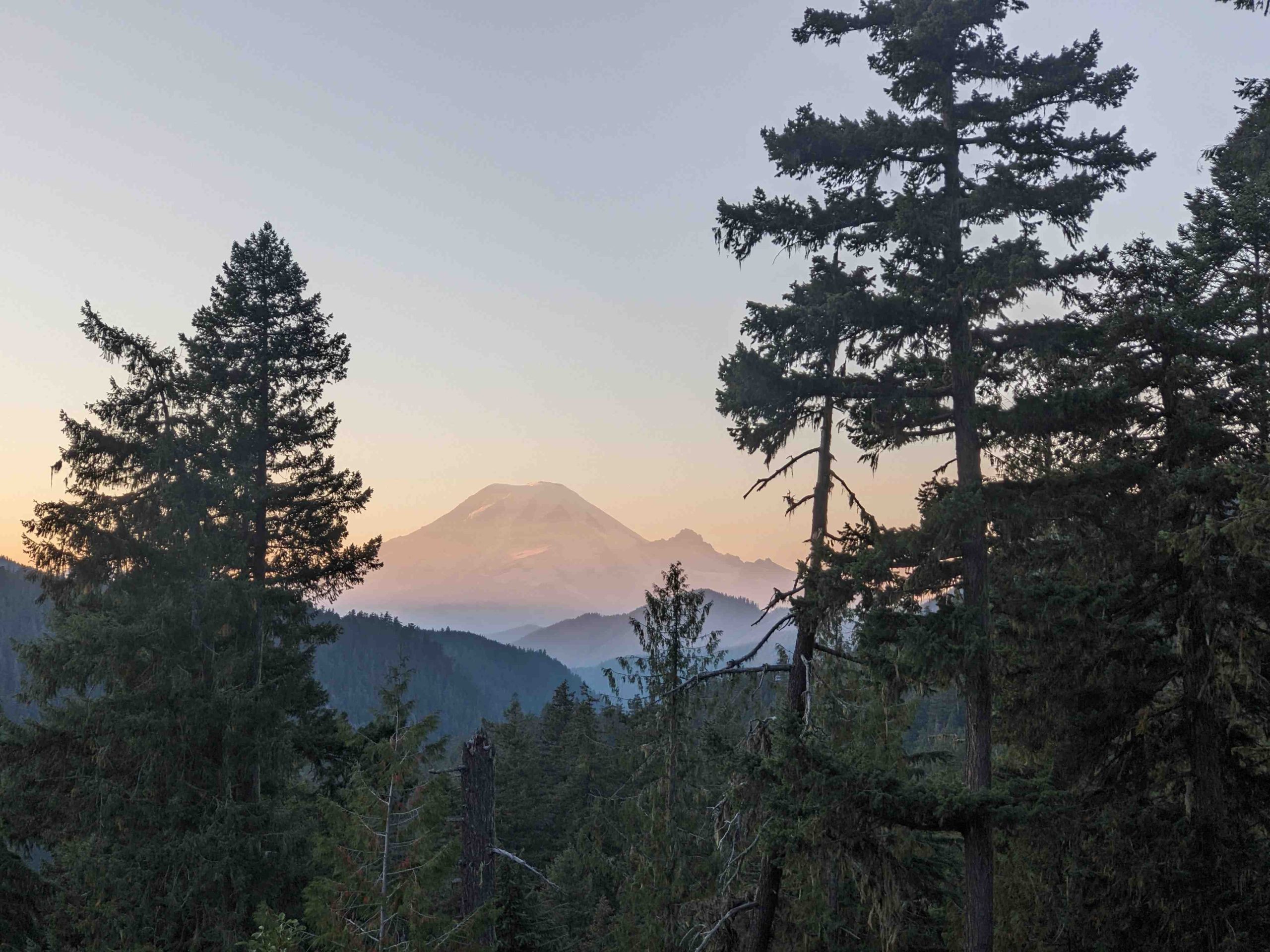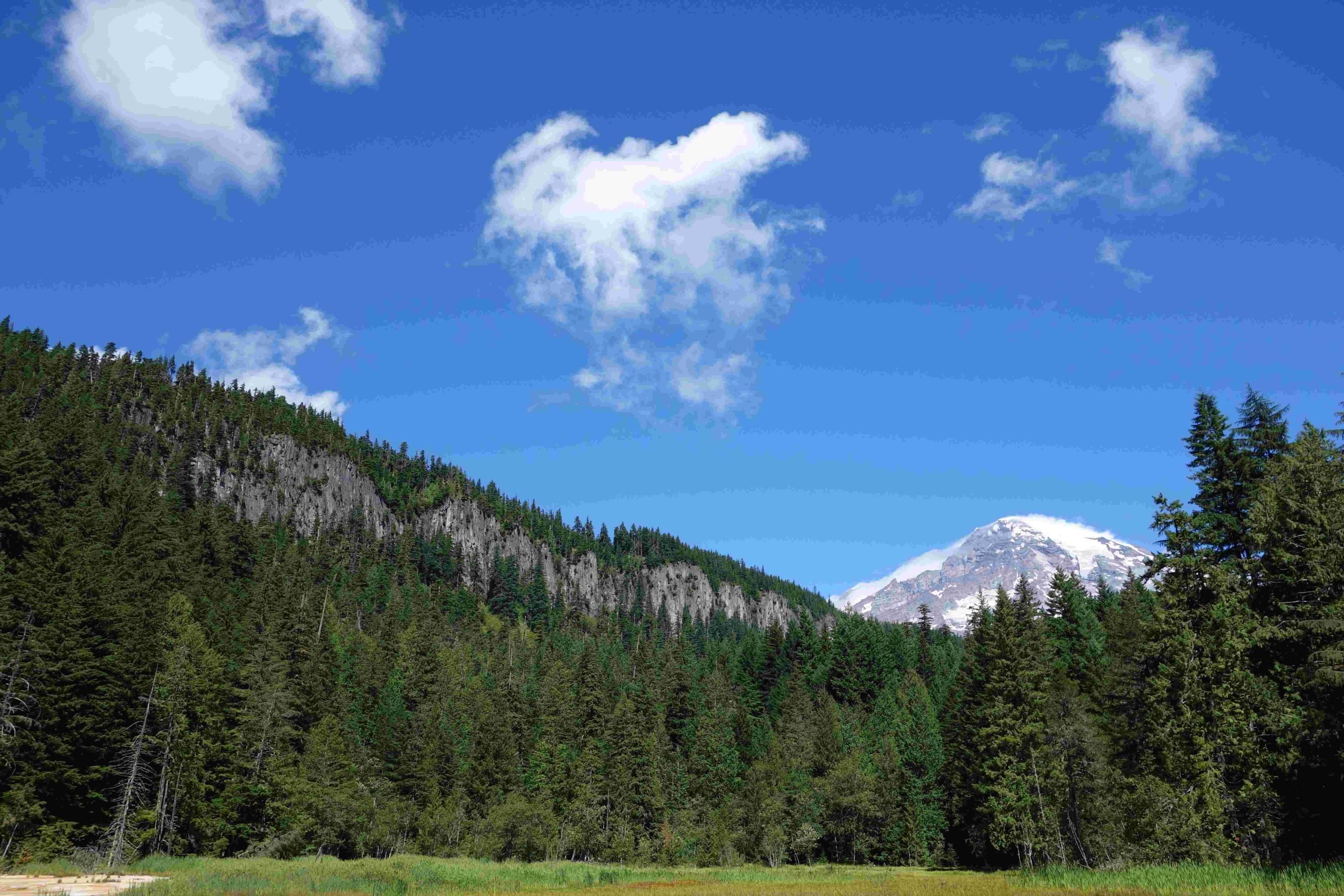The Third Burroughs Trail at Mount Rainier is a challenging 9.5-mile round-trip hike that offers breathtaking views of the mountain’s northeastern face. Starting at the Sunrise Visitor Center, this trail climbs 2,800 feet through alpine meadows and rocky terrain to reach the Third Burroughs Mountain at 7,800 feet elevation. Hikers are rewarded with panoramic vistas of glaciers, surrounding peaks, and on clear days, even distant mountain ranges.
What is the Distance of the Third Burroughs Trail?

The Third Burroughs Trail at Mount Rainier presents hikers with a substantial journey:
- Total round-trip distance: Approximately 9.5 miles
- One-way distance options:
- Via Sourdough Ridge Trail: 4.2 miles
- Via Sunrise Rim Trail: 4.7 miles
The slight variation in distance depends on the specific route chosen. Hikers should be prepared for a full day’s excursion, given the length and challenging nature of the trail.
How Much Elevation Gain Does the Trail Have?

The Third Burroughs Trail features significant elevation changes that contribute to its difficulty:
- Total elevation gain: Approximately 2,800 feet
- Starting elevation: 6,400 feet (Sunrise Visitor Center)
- Highest point: 7,800 feet (Third Burroughs Mountain)
The elevation gain is distributed as follows:
- Initial 0.8 miles: 450 feet gain
- To Second Burroughs: Additional 400 feet
- Final mile to Third Burroughs: Steep 800 feet ascent
This substantial elevation gain, combined with the high altitude, makes the hike particularly challenging and requires good physical conditioning.
What Makes the Third Burroughs Trail Challenging?
Several factors contribute to the difficulty of the Third Burroughs Trail:
-
Steep Terrain: The trail includes significant ascents and descents, with the final stretch to Third Burroughs being particularly steep.
-
High Altitude: Starting at 6,400 feet and reaching 7,800 feet, the thin air can affect hikers’ stamina and breathing.
-
Exposed Conditions: Much of the trail is above treeline, leaving hikers exposed to sun, wind, and potential weather changes.
-
Loose Surface: The final ascent involves navigating loose gravel and sand, requiring careful footing.
-
Length: At 9.5 miles round-trip, the trail demands endurance and proper preparation.
-
Weather Variability: Alpine conditions can change rapidly, necessitating appropriate gear and awareness.
What Are the Best Viewpoints Along the Trail?
The Third Burroughs Trail offers some of Mount Rainier National Park’s most spectacular vistas:
- Mount Rainier’s Northeastern Face:
- Unobstructed views of Winthrop Glacier and Inter Glacier
-
Opportunity to spot climbers en route to Camp Schurman and the summit
-
Glacier Basin:
- Visible from Second Burroughs
-
Views of Little Tahoma to the south
-
Panoramic Park Views:
- Fremont Lookout and northern park peaks
-
On clear days, glimpses of the Olympic Mountains to the west
-
White River Valley:
- Expansive views of the valley below
These viewpoints offer photographers and nature enthusiasts ample opportunities for capturing the park’s grandeur.
When is the Best Time to Hike the Third Burroughs Trail?
The optimal hiking window for the Third Burroughs Trail is typically:
- Season: Mid-July to early October
- Best months: August and September
Factors influencing the hiking season:
- Snow cover: The trail can remain snow-covered into early summer
- Weather stability: Late summer offers more reliable weather conditions
- Wildflower blooms: Peak wildflower season is usually in August
It’s crucial to check current trail conditions before setting out, as early or late-season snow can make the trail hazardous.
What Should I Pack for the Third Burroughs Trail?
Given the trail’s challenges and alpine environment, proper packing is essential:
- Water: At least 2-3 liters per person
- Food: High-energy snacks and a substantial lunch
- Layers: Including a warm, waterproof jacket
- Sun protection: Sunscreen, hat, and sunglasses
- First-aid kit: For minor injuries or emergencies
- Navigation: Map and compass (don’t rely solely on electronic devices)
- Emergency shelter: Such as a space blanket
- Trekking poles: Helpful for steep sections and stability
Remember, weather can change rapidly at high altitudes, so be prepared for various conditions.
Are There Any Facilities Along the Trail?
Facilities along the Third Burroughs Trail are limited:
- Trailhead: Located at Sunrise Visitor Center
- Parking available
- Restrooms and water fountains
- On the trail:
- No water sources (bring all necessary water)
- No restroom facilities beyond the trailhead
- Sunrise Camp: Small backcountry camp near the trail
- Requires wilderness permit for overnight stays
It’s important to practice Leave No Trace principles and pack out all waste.
How Do I Get to the Third Burroughs Trailhead?
To reach the Third Burroughs trailhead:
- Enter Mount Rainier National Park through the White River Entrance
- Follow the road to Sunrise
- Park at the Sunrise Visitor Center parking lot
Note: The road to Sunrise is typically open from late June to early October, weather permitting. Always check road conditions before your trip.
What Are the Park Regulations for This Trail?
When hiking the Third Burroughs Trail, be aware of these regulations:
- Pets: Not allowed on park trails
- Camping: Wilderness permits required for overnight stays
- Leave No Trace: Pack out all trash and follow LNT principles
- Wildlife: Do not feed or approach wildlife
- Off-trail travel: Stick to designated trails to protect fragile alpine vegetation
Adhering to these rules helps preserve the park’s natural beauty for future visitors.
The Third Burroughs Trail at Mount Rainier offers a challenging but rewarding hiking experience. With proper preparation and respect for the alpine environment, hikers can enjoy some of the most spectacular views in the national park. Always check current conditions, be prepared for changing weather, and enjoy the breathtaking beauty of Mount Rainier’s high country.
References
- Wheatless Wanderlust – How To Hike The Jaw-Dropping Burroughs Mountain Trail
- Washington Trails Association – Burroughs Mountain
- Dirty Shoes and Epic Views – How to Hike the Burroughs Mountain Trail in Mount Rainier National Park
- National Park Service – Mount Rainier Hiking
- Visit Rainier – Burroughs Mountain Trail
